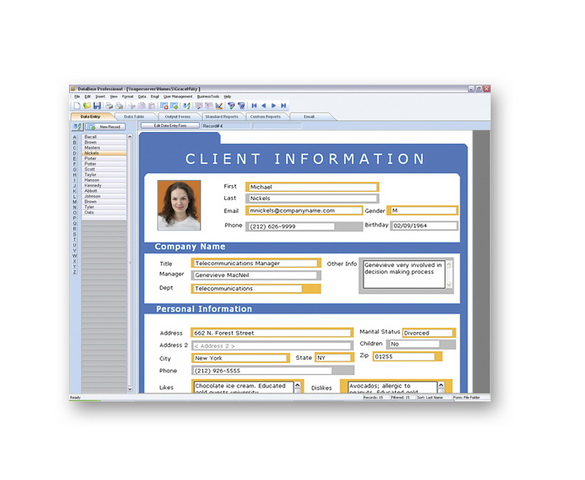

- #Mydatabase home and business reviews mac os x#
- #Mydatabase home and business reviews update#
- #Mydatabase home and business reviews upgrade#
- #Mydatabase home and business reviews free#
Now I’m discussing the Mac version of iTunes here on Windows, things are probably similar, but I haven’t looked at the actual file sizes on Windows. Doing so could save you as much as a couple of gigabytes, depending on how many applications you have installed.)
#Mydatabase home and business reviews free#
(You can use the free utility iCleanLanguage to remove language files from iTunes and your other applications. If you’re an English speaker and remove all the language resources you don’t need, the program becomes a mere 65 MB. These are files containing texts for menus, alerts and even help, in the different languages the program supports. The majority of the iTunes application is, in fact, made up of language resources. The actual executable of the program and its libraries make up about 33 MB, which is by no means huge.

When you look under the hood of iTunes, you find some interesting numbers. Some people say that larger applications take more time to load, yet this is not necessarily the case. Adobe Reader takes up 219 MB Bento is 188 MB and two of the iWork programs – Pages and Keynote – each exceed 290 MB. Without looking at large-scale application suites such as Microsoft Office or Adobe Creative Suite, I have several applications on my Mac that are larger than iTunes. In these days of terabyte hard disks – or disks offering several hundred gigabytes on older Macs – this is hardly a large application.
#Mydatabase home and business reviews mac os x#
How Big Is iTunes? While the Wikipedia definition of software bloat is partially valid, I think the first part of it to discount is that of a “larger installation footprint.” The iTunes 10.0 application on Mac OS X takes up 146.6 MB. I’ve taken into account many of the answers I’ve seen, and the following is an attempt to address this question. With this in mind, I asked the question “Do you think iTunes is bloated?” on my Web site in June 2010, and I have also asked the same question on several forums I frequent.

Software bloat is a term used to describe the tendency of newer computer programs to have a larger installation footprint, or have many unnecessary features that are not used by end users, or just generally use more system resources than necessary, while offering little or no benefit to its users. So I thought I’d take a look at this question, and the common answers, in an attempt to determine once and for all whether iTunes deserves to be called bloated.įirst of all, how do you define “bloated?” Wikipedia offers the following in the introduction to its article about software bloat: Few people actually explain why they feel the program is bloated, and those who do have reasons that I tend to disagree with. As an author who specializes in explaining iTunes, I hear this often, yet many of the complaints I hear don’t go further than hurling that invective at the program.

There’s a collocation that’s becoming increasingly common: the proximity of the words “iTunes” and “bloated.” Google those words and you’ll get about 220,000 results.
#Mydatabase home and business reviews update#
#Mydatabase home and business reviews upgrade#


 0 kommentar(er)
0 kommentar(er)
